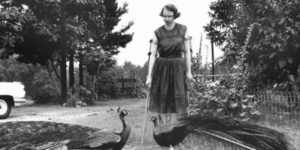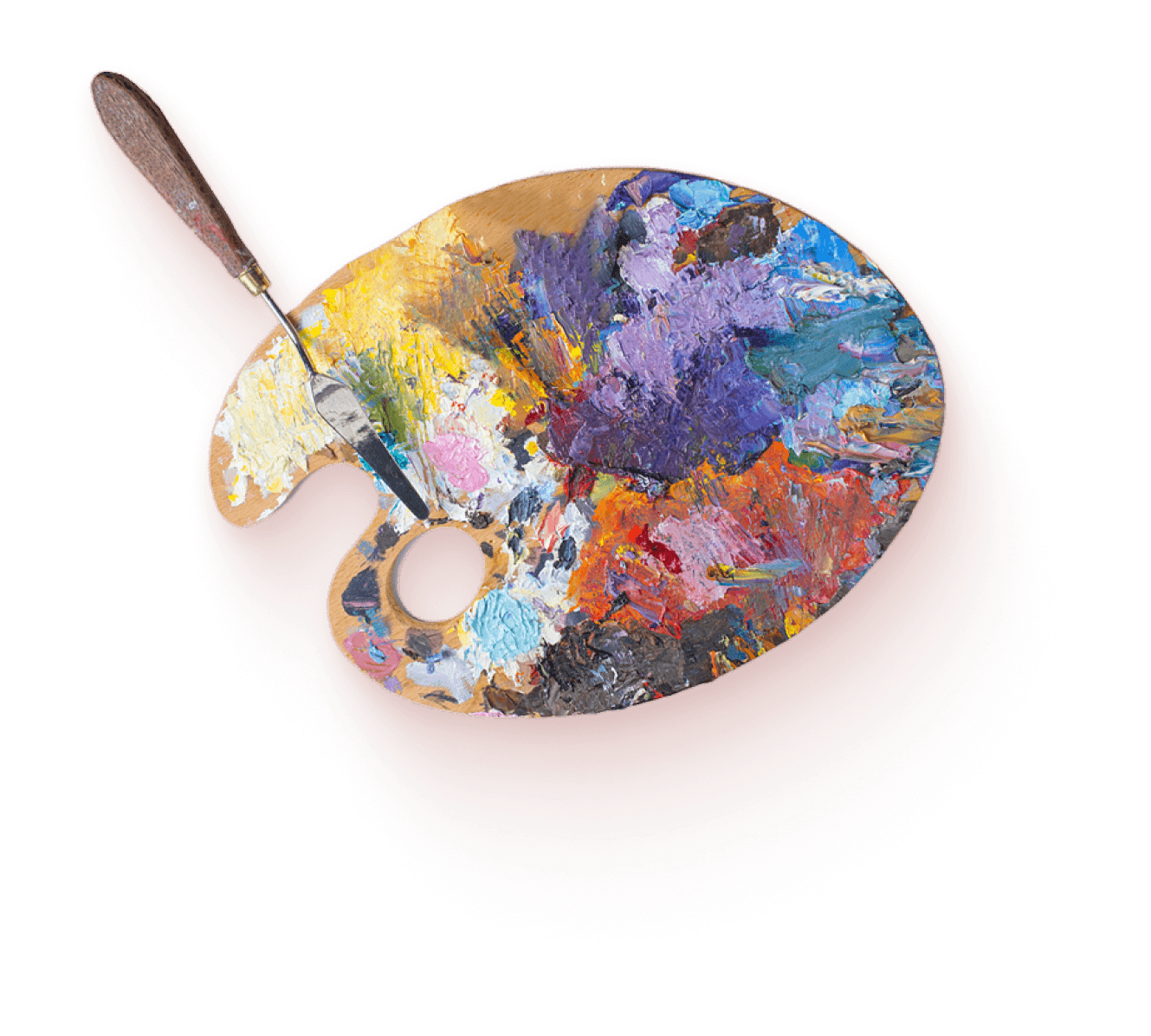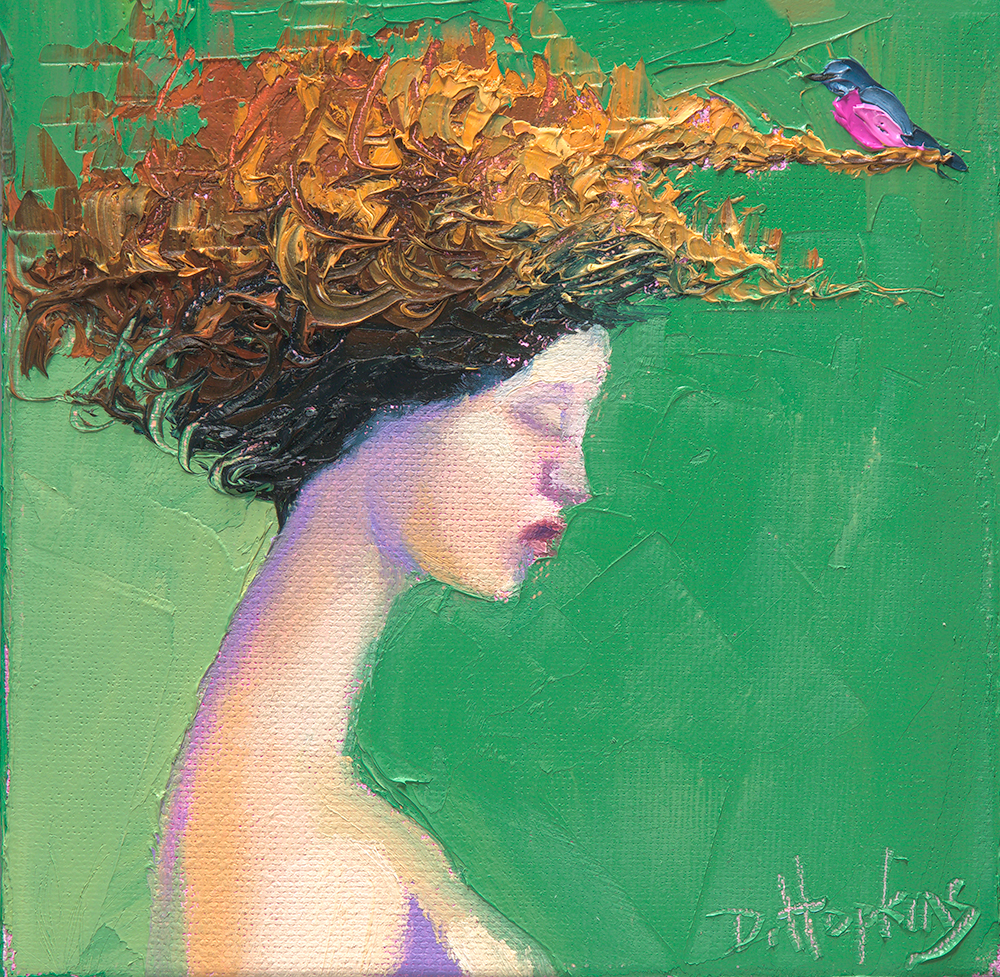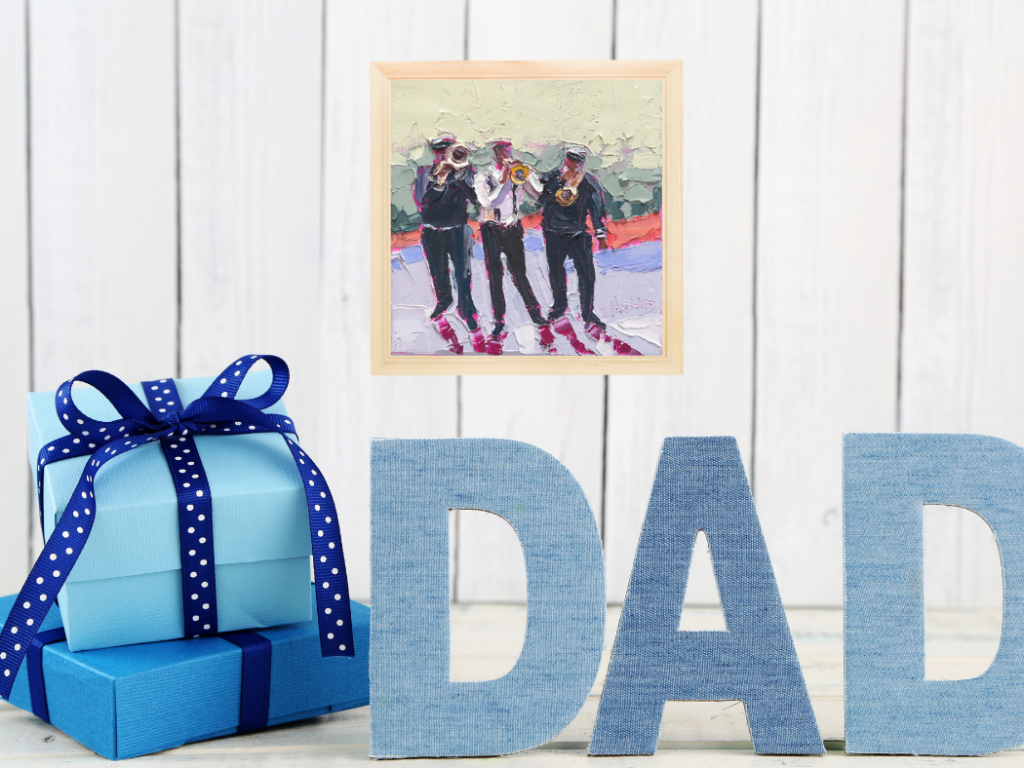Day 12. Drawing Inspiration and Glorified Chickens.
Home > Day 12. Drawing Inspiration and Glorified Chickens.
[et_pb_section bb_built=”1″ admin_label=”section”][et_pb_row admin_label=”Row”][et_pb_column type=”2_3″][et_pb_text admin_label=”Text” background_layout=”light” text_orientation=”left” use_border_color=”off” border_color=”#ffffff” border_style=”solid”]

“Flannery” 15×45 in, oil on canvas [creativ_button url=”https://denisehopkinsfineart.com/product/flannery-15×45-oil-canvas/” icon=”” label=”Buy Now” colour=”blue” colour_custom=”” size=”medium” edge=”straight” target=”_self”]
Books, not paintings, were the first art I loved and before I knew I had any artistic ability, before ubiquitous laptops and iphones, I took to writing words as a form of drawing. It was not only their meaning, but the very act of putting pen to paper that energized me. I liked watching a word form visually, left to right, up and down. I loved seeing a sentence in a place that had previously been devoid of any thought but also any pattern or design.
Writing was powerful to me not just because of the ideas it allowed me to convey, but the lines it allowed me draw.
In high school and beyond my favorite writer was Flannery O’Connor probably because I had not been introduced to many women authors and she was young (she died at just 39), southern, Catholic, a bit a misfit– all things I felt made us part of the same club.
It wasn’t until I started painting seriously that I could add another shared trait to my list: a love of birds. O’Connor raised peacocks on her farm and describes their beautiful, odd, at times awkward behaviors in an essay entitled “Living with a Peacock”.
In true O’Connor fashion, she avoids descriptions of the obvious or conventional in favor of the less idealistic and yet somehow more endearing qualities of the bird :

“Not every part of the peacock is striking to look at, even when he is full-grown. His upper wing feathers are a striated black and white and might have been borrowed from a Barred Rock Fryer; his end wing feathers are the color of clay; his legs are long, thin and iron-colored; his feet are big; and he appears to be wearing the short pants now so much in favor with playboys in the summer. These extend downward, buff-colored and sleek, from what might be a blue-black waistcoat. One would not be disturbed to find a watch chain hanging from this, but none does. Analyzing the appearance of the peacock as he stands with his tail folded, I find the parts incommensurate with the whole. The fact is that with his tail folded, nothing but his bearing saves this bird from being a laughingstock. With his tail spread, he inspires a range of emotions, but I have yet to hear laughter”
The peacock, she seems to suggest, is a just a moodier, bossier, occasionally more majestic chicken.
And, truth be told, most days I feel like chicken. Painting. Writing. Making those types of marks– those are the things that make me feel like peacock is even a little bit possible.
If you don’t want to miss any of the 31 paintings in 31 days this month, make sure subscribe to this blog!
[/et_pb_text][/et_pb_column][et_pb_column type=”1_3″][et_pb_sidebar admin_label=”Sidebar” orientation=”left” area=”sidebar-1″ background_layout=”light” remove_border=”off” /][/et_pb_column][/et_pb_row][/et_pb_section]
Denise Hopkins
October 12, 2017
Share Post
blog
Related Blog Posts
Art/Poetry Spotlight: “Fire Kindled Before you were Born”
Fire Kindled Before you were Born, 6×6, oil on canvas Last month, the gallery hosted our first ever poetry night....
🎨 A Father’s Day Gift Guide for Every Kind of Dad (Featuring Fine Art Prints!)
Father’s Day is in a few short weeks. Celebrate the dad in your life with art this year! He has...
New Bird Minis Preview– May 2025!
9 new bird minis will be available first to my VIPS at 8am on May 3 2025. They will all be...

Join the Denise Hopkins Fine Art VIP Club Today
Become a member and enjoy early access to new releases, exclusive discounts, and a new wallpaper for your computer or tablet. Elevate your art journey with us.




4 Responses
I really liked your painting today….but Becky called me, and she really LOVES it. I may have told you this at some time, but we had a peacock once here where we live. He simply came up to our house….imagine that, he found the only house in our country-side neighborhood wherein a serious Flannery O’Connor groupie lived….and stopped to stay with us for a couple of years. Then one day, he moved on….we hope, to grace some other person’s home. We had named him Pascal.
https://uploads.disquscdn.com/images/2d91025c5c72ffd76f6b89d6f4a42b864172d4aadb4df0df54927d7128497d0d.jpg https://uploads.disquscdn.com/images/bf8ad1cd8e8fd7653da5949d0f73d148916340298313594ac6d64346e06f3a18.jpg https://uploads.disquscdn.com/images/4a417d5bd51cfe02c408c60e4f97597a8772cfdc7d64fd03c2045fcfff302b12.jpg
That’s amazing!!
Just catching up on your blog today, Denise! This one spoke to me because we have a first love of the written word in common (of course that love is how we met about a decade ago!). These days I find writing exhausting and difficult. Well, I find photography hard and draining, too, but I get to see a “finished” piece much more quickly! When I was still toying around with writing creatively, I found myself working on shorter and shorter poems, mainly because I don’t have the attention span to write long, sweeping narratives! I settled on haiku a few years ago and occasionally write those.
Anyway, I don’t mean to go on about me. I wanted to ask if you find time to write–other than blogging here–and what genres you work in? Have you thought about somehow marrying these two loves? Travel writing seems like the dream job to me, and I think it would work very well for you (though not really suggesting you make a career change like this! Just, to borrow from this blog post, playing with ideas). Just imagine vacationing in Patagonia, waking to paint its grand vistas, and then writing about it later!?!
Yes! Absolutely! I don’t find much time to dedicate to other writing lately but it’s one of those things I always envision myself getting around to. Right now this blog was the way to marry the art with the writing but I do hope one day I’ll be able to give writing the attention I’ve always wanted to… who knows maybe 30 poems in 30 days or something equally crazy. Ritual seems the only way I can get myself going.
There’s also a fear I have with writing that I don’t with painting. I’ve written about it a little before but I think it’s pretty interesting that one feels far more vulnerable than the other.